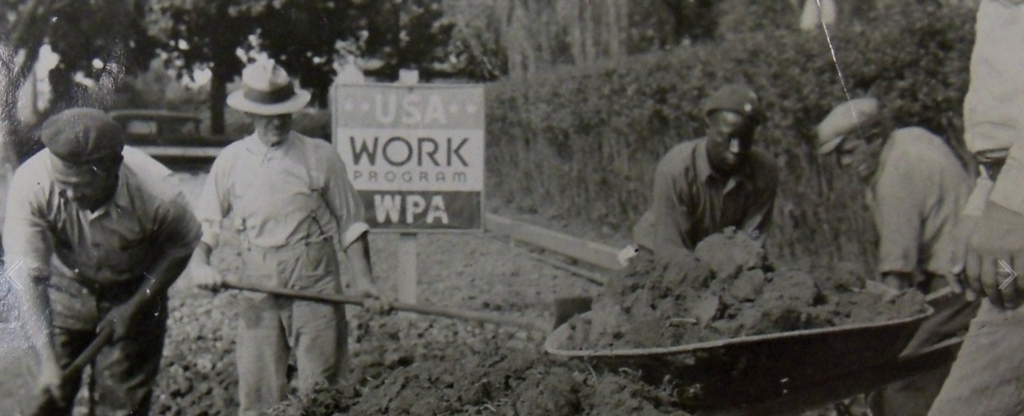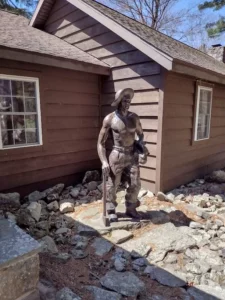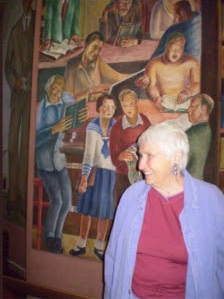Tell Us About Your Favorite New Deal Site
Send us a first-person story of 100 (or so) words describing the site and why you chose it. Submissions will appear in future issues of The Fireside! Be sure to include a photo (with photo credit). Send to [email protected]. Thanks!
An East Texas Treasure

CCC men at Caddo Lake State Park. Courtesy, NARA.
In 1933, the Civilian Conservation Corps arrived at Caddo Lake State Park, a maze of sloughs, bayous and backwaters in Uncertain, Texas, hard by the Louisiana border. Beset by mud, mosquitoes and local political bickering, the men dredged the lake, built roads and trails and constructed the entrances, pavilion, shelters, cabins and campsites using materials harvested from the surrounding parkland. My father took me there on my first fishing trip six or seven years later. We met our guide near the lake. He steered our rowboat through giant bald cypress trees draped with Spanish moss. The sun was visible only briefly at noon. I came equipped with a cane pole and a bobber. I don’t remember catching any fish that day, but seventy-five years later, Caddo Lake State Park is still my favorite New Deal site.
— Milton Jordan, Georgetown, Texas










